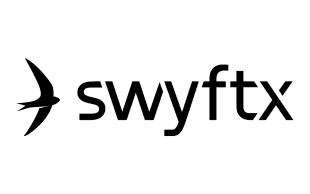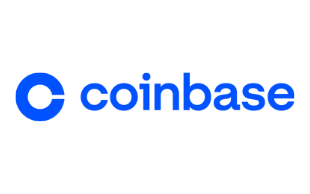
How we help you buy Cardano
Unlike other sites, we let you compare more than a dozen exchanges where you can buy Cardano (ADA) based on trading fees and payment methods, meaning it's easier to find the cheapest and easiest places to buy Cardano.


By
James Edwards&
Frank CorvaEdited by
Thomas StelzerReviewed by
Fred SchebestaUpdated

Unlike other sites, we let you compare more than a dozen exchanges where you can buy Cardano (ADA) based on trading fees and payment methods, meaning it's easier to find the cheapest and easiest places to buy Cardano.
The easiest and cheapest place to buy Cardano in Australia is via a dedicated cryptocurrency exchange.
You can follow the steps below to get started:
Best for beginners

Best for long term investors

Best Overall

"Top picks" are those we've evaluated to be best for certain product features or categories – you can learn more in our full methodology. If we show a "Promoted Pick" it's been chosen from among our commercial partners based on factors that include special features or offers, and the commission we receive.
Keep in mind that these picks are suggestions and that the best crypto exchange for you will depend on your individual needs. There are other products on the market not included in our picks.
You can buy Cardano on more than a dozen crypto exchanges in Australia.
You can compare crypto exchanges based on their payment method options below:
We currently don't have that product, but here are others to consider:
How we picked theseThe best place to buy Cardano in Australia is arguably via a crypto exchange that lets you deposit AUD for free and offers Cardano (ADA) spot markets like Kraken or CoinSpot.
A spot market is like a marketplace where you can buy and sell cryptocurrencies directly with other users. This means you can actually set the price you want to buy Cardano at (known as a "limit order"), instead of simply getting the current price.
Spot markets also offer much lower trading fees than instant purchase options, which can charge more than 10 times as much as the spot market. For example, CoinSpot charges a 0.10% trading fee when buying Cardano with AUD on the spot market, but charges a 1% (plus spread) if using the instant purchase method.
You'll need the following if you want to buy Cardano via a crypto exchange:
Much like Ethereum, Cardano (ADA) is a layer-1 blockchain that supports smart contracts. Its infrastructure enables decentralised applications (dapps) to be built on its network, which operates under a proof-of-stake consensus.
Its success as a cryptocurrency can be at least partly attributed to its founder, Charles Hoskinson, a notable figure in the crypto space and one of the co-founders of Ethereum.
The Cardano roadmap (also referred to as development eras) is broken into 5 stages – foundation, decentralisation, smart contracts, scaling and governance. It aims to be a scalable, interoperable and sustainable blockchain for real-world applications and the future economy.
While Cardano has significant goals and a strong team, it has been consistently overshadowed by its slow development cycle, which has seen its usability fall behind that of many other competing networks like Ethereum and Solana.

"Cardano has remained one of the largest and most popular cryptocurrencies since it launched in 2017 and has taken a somewhat unique research-based approach to blockchain technology. While some investors believe this will help make Cardano the dominant smart contract platform in future, others are skeptical that it can deliver on its promises. It also lacks the same level of activity as its main competitors like Ethereum and Solana, ranking outside the top 10 platforms for total value locked (TVL), according to DefiLlama."

While it's possible Cardano (ADA) could reach a price of $100 per token, it's fairly unlikely based on the total supply of ADA coins. If ADA did reach a price of $100, this would put the entire market capitalisation of Cardano at $4.5 trillion, making it more valuable than every company on the planet.
Based on its previous price performance, it's possible Cardano could reach a price of more than $3. In fact, our expert panel predicts Cardano could reach a price of $3.85 by 2030.



James Edwards is a seasoned cryptocurrency expert and content creator with over a decade of experience in blockchain, DeFi and Web3. An early adopter of Bitcoin, he has contributed to major outlets like Nasdaq, CoinDesk, and The Street, and has reported at leading industry events such as TechCrunch Disrupt and CoinDesk Consensus. James has produced over 200 YouTube videos, including interviews with influential figures like Changpeng Zhao (CZ) and Tim Draper, and holds a Bachelor of Liberal Arts & Sciences in Psychology from the University of Sydney, along with a Tier 1 Generic Knowledge certification in compliance with ASIC standards. James created cryptocurrency content at Finder as a video producer, writer and editor from 2018 to 2023. See full bio

Frank is a cryptocurrency expert whose work aims to simplify the complexities of this evolving space for a broad audience. His byline has appeared in Forbes and Bitcoin Magazine. Frank holds multiple advanced degrees, including an MBA in Finance from Pace University and a Master of Social Work from Hunter College. Frank was a Cryptocurrency Writer at Finder from 2022 to 2024. See full bio
Find a better deal, save on your bills and get a free gift card. Sign up to be the first to hear about new Finder Rewards.
This guide provides step-by-step instructions on how to buy Vine, lists some exchanges where you can get it and provides daily price data on VINE.
This guide provides step-by-step instructions on how to buy Unicorn Fart Dust, lists some exchanges where you can get it and provides daily price data on UFD.
This guide provides step-by-step instructions on how to buy Hyperliquid, lists some exchanges where you can get it and provides daily price data on HYPE.
This guide provides step-by-step instructions on how to buy Hedera, lists some exchanges where you can get it and provides daily price data on HBAR.
A panel of industry specialists give us their predictions on the price of Binance Coin to 2035.
The easiest way to buy XRP in Australia is from a cryptocurrency exchange. Read our guide for a simple explanation of how to get started.
Learn how to buy Binance Coin in Australia with our simple step-by-step guide and tips on what to know before you get started.
Learn how to buy Litecoin in Australia with our simple step-by-step guide and tips on what to know before you get started.
Finder makes money from featured partners, but editorial opinions are our own.
Finder is one of Australia's leading comparison websites. We are committed to our readers and stand by our editorial principles.
We try to take an open and transparent approach and provide a broad-based comparison service. However, you should be aware that while we are an independently owned service, our comparison service does not include all providers or all products available in the market.
Some product issuers may provide products or offer services through multiple brands, associated companies or different labeling arrangements. This can make it difficult for consumers to compare alternatives or identify the companies behind the products. However, we aim to provide information to enable consumers to understand these issues.
We make money by featuring products on our site. Compensation received from the providers featured on our site can influence which products we write about as well as where and how products appear on our page, but the order or placement of these products does not influence our assessment or opinions of them, nor is it an endorsement or recommendation for them.
Products marked as 'Top Pick', 'Promoted' or 'Advertisement' are prominently displayed either as a result of a commercial advertising arrangement or to highlight a particular product, provider or feature. Finder may receive remuneration from the Provider if you click on the related link, purchase or enquire about the product. Finder's decision to show a 'promoted' product is neither a recommendation that the product is appropriate for you nor an indication that the product is the best in its category. We encourage you to use the tools and information we provide to compare your options.
Where our site links to particular products or displays 'Go to site' buttons, we may receive a commission, referral fee or payment when you click on those buttons or apply for a product.
When products are grouped in a table or list, the order in which they are initially sorted may be influenced by a range of factors including price, fees and discounts; commercial partnerships; product features; and brand popularity. We provide tools so you can sort and filter these lists to highlight features that matter to you.
Please read our website terms of use and privacy policy for more information about our services and our approach to privacy.
We update our data regularly, but information can change between updates. Confirm details with the provider you're interested in before making a decision.
How likely would you be to recommend Finder to a friend or colleague?
Our goal is to create the best possible product, and your thoughts, ideas and suggestions play a major role in helping us identify opportunities to improve.
Need help? Contact Support